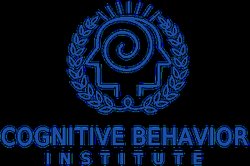 When many people ponder the term, attachment, they may think of various definitions, such as 1.) a document or picture attachment sent through e-mail, 2.) a special hose attached to your home vacuum cleaner, or perhaps 3.) when two people are committed (or attached) to one another in a romantic relationship. What about you though — does the image of a vacuum cleaner with some funky looking attachment appear in your mind? Or do you think of attachment in a counseling context, more like something involving the relationship between a parent or caregiver and their child?
When many people ponder the term, attachment, they may think of various definitions, such as 1.) a document or picture attachment sent through e-mail, 2.) a special hose attached to your home vacuum cleaner, or perhaps 3.) when two people are committed (or attached) to one another in a romantic relationship. What about you though — does the image of a vacuum cleaner with some funky looking attachment appear in your mind? Or do you think of attachment in a counseling context, more like something involving the relationship between a parent or caregiver and their child?
The concept of attachment can manifest in many ways, especially in a therapeutic or counseling context, and is frequently discussed in reference to parenting. It could include attachment of a child to a parent, or the opposite (a parent to a child), or an individual being emotionally attached or wanting attention from their partner, friends, coworkers, or boss.
What is attachment though?
Without getting too into all the technical jargon, various attachment theorists and researchers, including John Bowlby, Mary Ainsworth, Mary Main, and Judith Solomon, indicated that attachment is one part (of many parts) of the relationship between a parent or caregiver and child, and that there are actually multiple attachment styles. Essentially, the purpose of attachment is to help an infant or child feel safe, secure, and protected, knowing they have someone to turn to when they are frightened, not feeling well, physically hurt, or emotionally upset. And just in case you’re wondering…other integral parts of the relationship between a parent and child include playmate, caregiver, disciplinarian, or teacher and should not be confused or used interchangeably with attachment.
What can various attachment styles look like?
Attachment, according to the theorists mentioned above, falls on a continuum, ranging from secure to disorganized and outlines the degree to which individuals have success or difficulty functioning independently and / or within relationships, which could include romantic relationships, work-related, or social friendships. Many would argue that one’s attachment style can be due to ‘how they were raised,’ but like many things in life, the answer is, ‘it depends.’ The degree to which caregivers respond to children’s needs can have a significant impact on how the child navigates their life. How children process experiences with their primary caregiver can vary, as can the longer-term impacts within their lives as they grow into adults. If you haven’t considered this before, see below for a short summary of attachment styles and what they can look like in childhood and adulthood.
- Secure Attachment – These children see their caregiver as a safe and secure base, which enables them to explore new activities more comfortably or build friendships, knowing they can consistently return to, and depend upon, the home-base of their safe caregiver. As this child is raised, their confidence and exploration grow into a more independent adolescent and adult.
- Anxious / Preoccupied Attachment – Parents of these children are only occasionally present for their child physically and/or emotionally. This child may have difficulty trusting that others will be there when needed and may feel clingy or insecure in their adult relationships.
- Avoidant / Dismissive Attachment – Parents in these cases may meet the child’s basic needs, but not their emotional needs. This can create emotional distance challenges in the child’s future relationships, causing them to avoid emotional connection with others, have intimacy issues, difficulty showing vulnerability, and/or pushing other “emotionally-in-tune” people away or viewing them as needy.
- Disorganized Attachment – These children may be raised by caregivers who do not consistently provide the safe and secure home-base regarding similar scenarios. In other words, on some occasions for a particular scenario, the child may be met in a loving supportive manner, then other times (for the same scenario) receive a harsh or emotionally detached response. This inconsistency could be frightening and confusing to their child as to which parent they can expect, which may ultimately cause the child to avoid the parent.
Turn to CBI for support!
If you find yourself, family, or friends (of any age) identifying with or experiencing some level of distress related to attachment, uncertain what to do about it or what it may mean, consider contacting the Cognitive Behavior Institute (CBI). Seasoned counselors who specialize in attachment, parenting, child and adolescent counseling, among other specialties, are ready to provide the needed support. Please get in touch with CBI via phone at 724-609-5002 or New Patient Inquiry Form for in-person or virtual appointments with offices in Cranberry Township, Monroeville, and Mt. Lebanon.
References
Benoit, D. (2004). Infant-parent attachment: Definition, types, antecedents, measurement and outcome. Paediatrics & child health, 9(8), 541-545.

